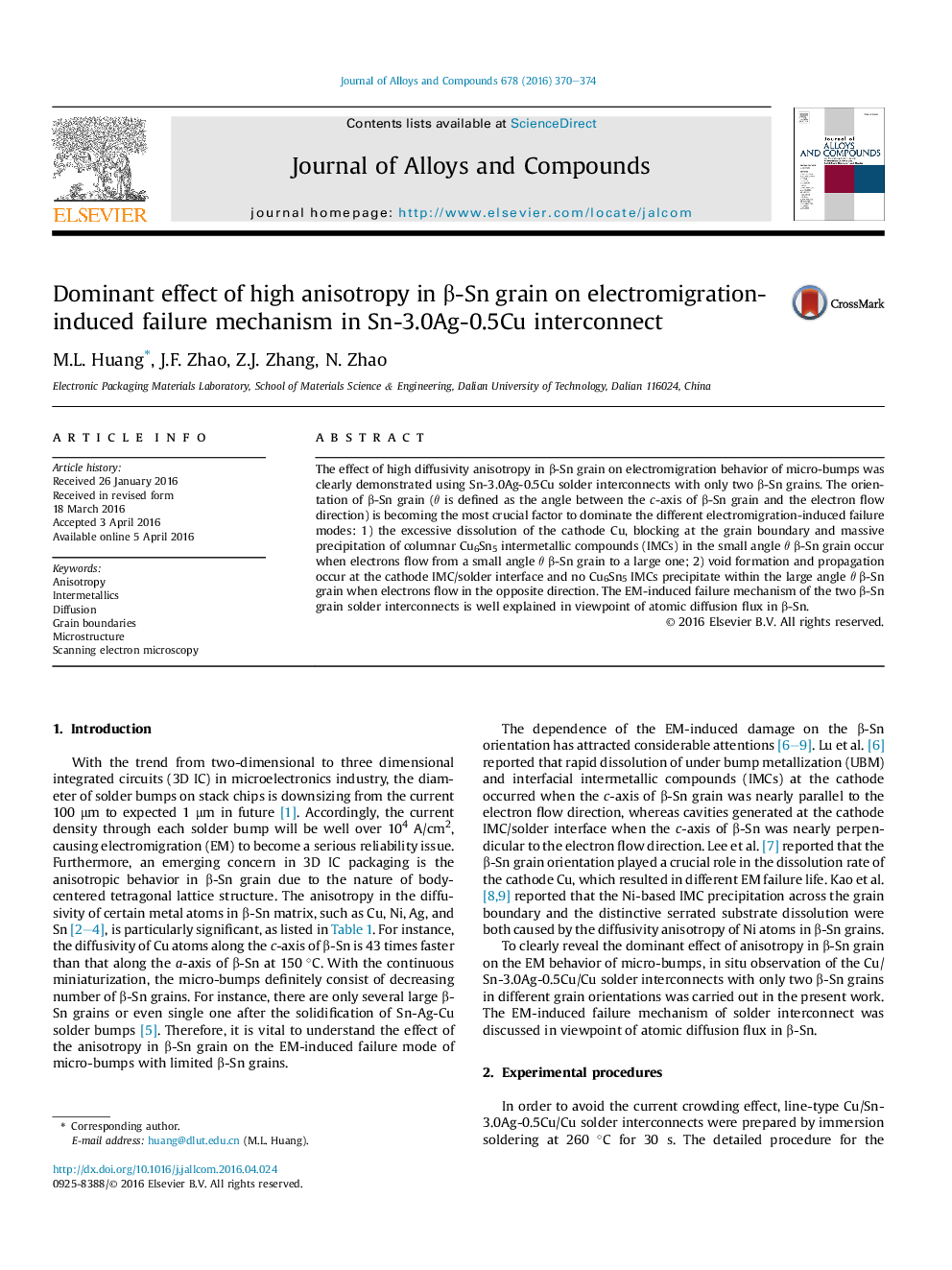| Article ID | Journal | Published Year | Pages | File Type |
|---|---|---|---|---|
| 1606145 | Journal of Alloys and Compounds | 2016 | 5 Pages |
•High anisotropy in β-Sn dominates different electromigration-induced failure mode.•Excessive dissolution of cathode Cu occurs if electrons flow in forward direction.•Voids initiate and propagate at cathode if electrons flow in reverse direction.•Failure modes are well explained in viewpoint of atomic diffusion flux in β-Sn.
The effect of high diffusivity anisotropy in β-Sn grain on electromigration behavior of micro-bumps was clearly demonstrated using Sn-3.0Ag-0.5Cu solder interconnects with only two β-Sn grains. The orientation of β-Sn grain (θ is defined as the angle between the c-axis of β-Sn grain and the electron flow direction) is becoming the most crucial factor to dominate the different electromigration-induced failure modes: 1) the excessive dissolution of the cathode Cu, blocking at the grain boundary and massive precipitation of columnar Cu6Sn5 intermetallic compounds (IMCs) in the small angle θ β-Sn grain occur when electrons flow from a small angle θ β-Sn grain to a large one; 2) void formation and propagation occur at the cathode IMC/solder interface and no Cu6Sn5 IMCs precipitate within the large angle θ β-Sn grain when electrons flow in the opposite direction. The EM-induced failure mechanism of the two β-Sn grain solder interconnects is well explained in viewpoint of atomic diffusion flux in β-Sn.
